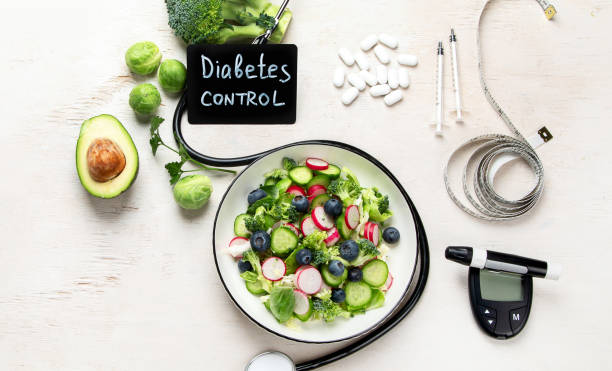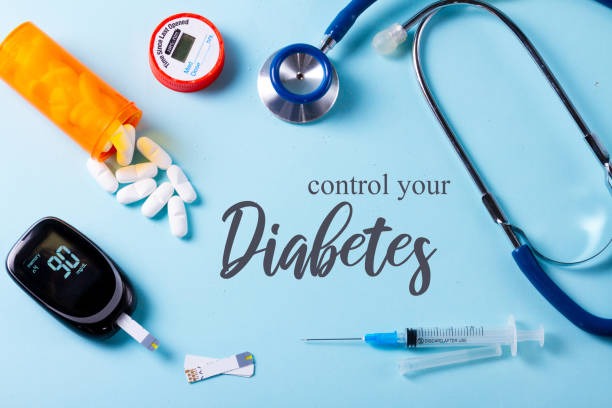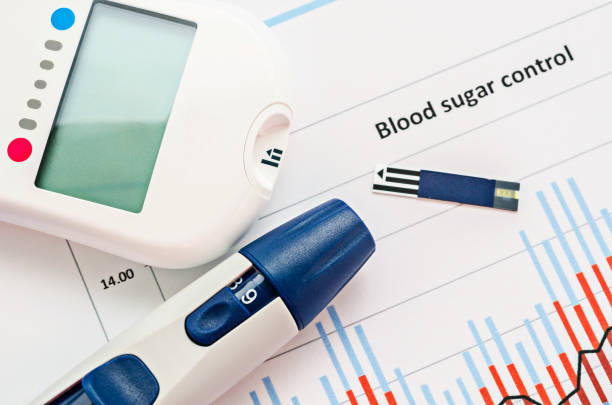Managing your blood sugar is one of the most important steps to living well with diabetes. Whether you’re newly diagnosed or have been managing diabetes for years, learning how to keep your blood sugar in a healthy range can help prevent serious problems and boost your energy and mood.
This easy-to-follow guide shares proven, science-based tips for blood sugar control through healthy eating, regular exercise, daily habits, and emotional support. Let’s get started!
Why Blood Sugar Control Matters
Keeping your blood sugar in a healthy range can help you feel your best and avoid serious health issues. When your blood sugar is well-managed, you are more likely to:
- Prevent or delay diabetes-related complications
- Stay energized and active throughout the day
- Boost your mood and improve mental focus
- Sleep more soundly and feel more balanced overall
Uncontrolled blood sugar—whether too high or too low—can lead to symptoms like tiredness, dizziness, or more serious health problems.
The Centers for Disease Control and Prevention (CDC) says that managing blood sugar is one of the most important steps for staying healthy if you have diabetes.
Understanding Normal Blood Sugar Levels
Knowing your target blood sugar range is a key part of staying in control of your diabetes. When you understand your personal goals, it’s easier to make smart choices about food, exercise, and medication. This helps you keep your levels steady and avoid spikes or crashes.
Blood Sugar Targets for Most Adults with Diabetes:
- Before meals: 80–130 mg/dL
- Two hours after meals: Less than 180 mg/dL
These numbers are general guidelines. Your personal target range may be different. Always talk with your doctor or healthcare team to set the goals that are right for you.

Healthy Eating for Blood Sugar Control
What you eat plays a big role in your blood sugar levels. Choosing the right foods can help you stay steady and avoid sudden spikes or drops. Healthy eating is one of the best ways to manage diabetes and feel your best every day.
Best Foods for Blood Sugar Control:
- Leafy greens (like spinach and kale): Low in carbs and packed with fiber to support steady blood sugar
- Whole grains (such as brown rice and quinoa): Digest more slowly, helping to prevent sugar spikes
- Lean proteins (including chicken, fish, and tofu): Help keep blood sugar levels balanced and support muscle health
- Legumes (like beans and lentils): Full of fiber and protein to support longer-lasting energy
- Healthy fats (from avocados, nuts, and olive oil): Help slow down digestion and reduce blood sugar swings
Limit These Foods to Help Manage Blood Sugar:
- Sugary drinks and snacks: Can cause quick spikes in blood sugar
- White bread, rice, and pasta: Low in fiber and turn into sugar quickly
- Fried and fast foods: Often high in unhealthy fats and calories
- Full-fat dairy products: Can raise blood sugar and cholesterol
- Processed meats: May contain added sugars and unhealthy fats
Use the Plate Method from the American Diabetes Association to build a healthy, balanced meal:
- Half your plate: Non-starchy vegetables like broccoli, spinach, or peppers
- One quarter: Lean protein such as chicken, fish, or tofu
- One quarter: Whole grains or starchy vegetables like brown rice or sweet potatoes
The Role of Carbohydrates
Carbohydrates have the biggest impact on your blood sugar levels because they are broken down into sugar by your body. The type of carbs you eat can affect how quickly your blood sugar rises, so it’s important to choose healthy sources of carbs.
Tips for Managing Carbs Effectively:
- Count carbs to understand how they affect your blood sugar levels
- Choose complex carbs (such as whole grains, legumes, and vegetables) over simple carbs found in sugary foods
- Spread your carbs evenly throughout the day to help keep your blood sugar steady
Work with a registered dietitian to create a personalized carb plan that fits your lifestyle and goals
Exercise: A Natural Blood Sugar Regulator
Physical activity helps your body use insulin more effectively. When you exercise, your muscles become better at absorbing glucose from your blood, which helps lower your blood sugar levels. Regular movement can make a big difference in managing your diabetes.
Easy Ways to Get Moving and Boost Your Health:
- Walk for 30 minutes a day: A simple and effective way to stay active
- Stretch or do yoga: Great for flexibility and stress relief
- Swim or bike: Low-impact exercises that are easy on your joints
- Strength training with light weights: Helps build muscle and improve insulin sensitivity
Aim for at least 150 minutes of moderate exercise each week. Even small bursts of activity after meals can help lower your blood sugar and improve your overall health.
Pro tip: Always check your blood sugar before and after exercise, especially if you take insulin, to ensure it stays within a safe range.
For more tips on staying active, visit the American Diabetes Association.
Keep Stress in Check
Stress can have a big impact on your blood sugar levels. When you’re stressed, your body releases hormones like cortisol that can make it harder for insulin to do its job. This can lead to higher blood sugar levels, even if you’re eating well and exercising regularly.
Stress-Busting Activities to Try:
- Deep breathing exercises: Help calm your mind and relax your body
- Meditation or prayer: Offer a peaceful way to reduce stress and clear your thoughts
- Gentle stretching or yoga: Relieve tension and improve flexibility
- Journaling your thoughts: A great way to process emotions and reduce anxiety
- Talking to a friend or counselor: Sharing your feelings can lighten your emotional load
Getting enough sleep (7–9 hours per night) is also crucial for reducing stress and helping your body stay balanced.
Stay on Top of Your Medications
If you take insulin or other diabetes medications, proper timing is essential. To manage your blood sugar effectively, make sure you:
- Take your medications exactly as prescribed by your doctor
- Don’t skip doses, even if you’re feeling fine
- Talk to your doctor if you experience any side effects or have concerns
Some medications should be taken with food, while others should not. If you’re unsure about the timing, check with your pharmacist for guidance to ensure you’re using them correctly.

Hydration and Blood Sugar
Drinking enough water is important for managing your blood sugar. It helps flush excess sugar out of your blood through urine, which can help keep your levels in check. Staying hydrated also prevents dehydration, a condition that can cause your blood sugar to rise and make it harder to manage diabetes.
Tips to Stay Hydrated and Support Healthy Blood Sugar Levels:
- Aim for 8 cups (64 oz) of water a day to keep your body properly hydrated
- Carry a water bottle with you to make it easier to drink throughout the day
- Add lemon or cucumber slices to your water for a refreshing, sugar-free flavor boost
- Avoid sugary drinks and sodas, as they can raise your blood sugar levels
Monitor Your Blood Sugar Regularly
Checking your blood sugar regularly is key to understanding how your body responds to different factors. It helps you see how food, physical activity, stress, and medications affect your blood sugar levels. Monitoring your blood sugar gives you valuable insights that can guide your diabetes management plan and help you make better decisions for your health.
Ways to Monitor Your Blood Sugar Effectively:
- Fingerstick tests using a glucometer: A simple way to check your blood sugar levels at home
- Continuous glucose monitor (CGM): Provides real-time updates on your blood sugar throughout the day
- Track your results in a log or app to spot trends and patterns
Be sure to share your blood sugar readings with your doctor, so they can help you adjust your care plan if needed for better management.
Know the Signs of High and Low Blood Sugar
Signs of High Blood Sugar (Hyperglycemia):
- Frequent urination: You may need to use the bathroom more often than usual
- Increased thirst: You may feel extremely thirsty and need to drink more water
- Blurry vision: High blood sugar can affect your ability to see clearly
- Fatigue: Feeling tired or sluggish, even after getting enough rest
- Headaches: Persistent headaches can be a sign of elevated blood sugar
Signs of Low Blood Sugar (Hypoglycemia):
- Shaking or sweating: You may feel shaky or break out in a cold sweat
- Dizziness or confusion: It might be hard to think clearly or stay balanced
- Irritability: Feeling moody or easily upset can be a warning sign
- Hunger: Sudden or strong feelings of hunger, even after eating
- Fast heartbeat: Your heart may race or feel like it’s pounding
If your blood sugar drops too low, act fast. Eat or drink something with sugar right away, such as:
- 4 ounces of fruit juice (like orange or apple juice)
- 1 glucose tablet (check the label for correct dosage)
- 1 tablespoon of honey or sugar
After 15 minutes, check your blood sugar again. If it’s still low, repeat the steps until your level returns to normal.
Build a Strong Support Team
Managing diabetes can feel overwhelming, but you don’t have to do it by yourself. Support from family, friends, and healthcare providers can make a big difference in your journey.
Your Diabetes Care Team May Include:
- Primary care doctor – helps manage overall health
- Endocrinologist – specializes in treating diabetes
- Registered dietitian – guides your food choices
- Diabetes educator – teaches you how to manage diabetes
- Mental health counselor – supports your emotional well-being
You can also join a diabetes support group—either online or in person. Talking with people who understand what you’re going through can boost your confidence and help you stay on track.
Check out the Diabetes Support Directory from Beyond Type 1 to find helpful options near you.

Make a Plan for Long-Term Success
Managing your blood sugar isn’t about being perfect—it’s about being steady. Small changes, like choosing healthier meals or moving more each day, can make a big difference over time. Stick with it, and those small steps will add up to long-term success.
Set Yourself Up for Success
- Create SMART goals: Specific, Measurable, Achievable, Relevant, and Time-bound
- Use a journal or app to track your daily habits and progress
- Celebrate every win—even the small ones matter
- Be gentle with yourself. Every day gives you a fresh start and a chance to keep going
Final Thoughts: You’ve Got This!
Blood sugar control takes effort, but you’re not alone—and you can do this.
With the right tools, a strong support system, and healthy daily habits, you can take charge of your diabetes. Step by step, you can protect your health and enjoy a full, active life.
Ready to Take Charge of Your Health?
Start today by choosing one small, healthy habit from this guide.
You could add more fiber to your meals, take a short walk after dinner, or check your blood sugar more often. Every small step helps you take control and move toward a healthier, more balanced life.

